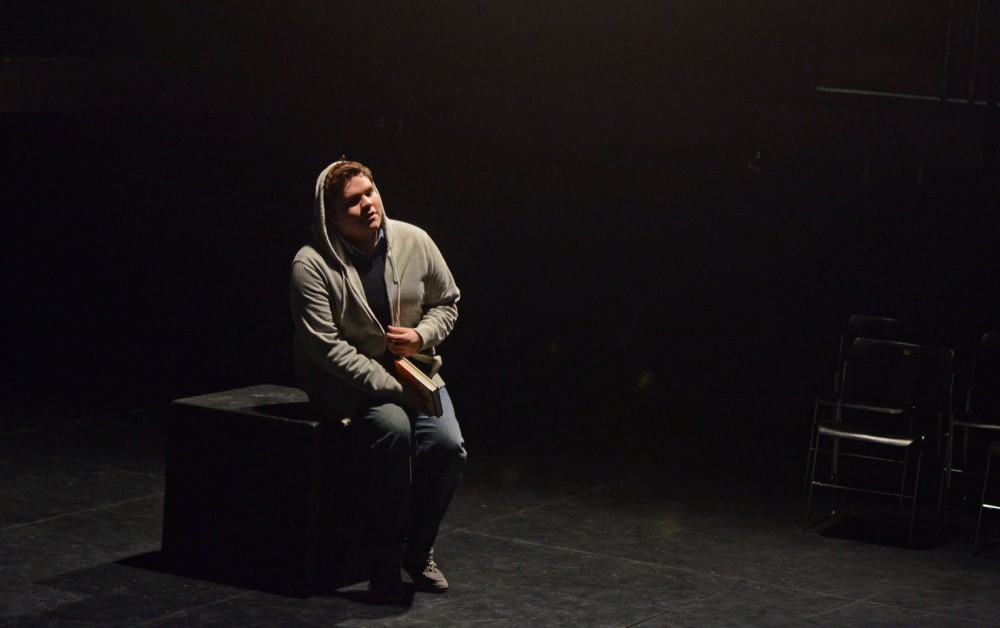Theater student Bijan Riahi’s skin color gives him the flexibility to play characters with a variety of ethnic backgrounds.
But the University of Minnesota senior said he has friends who have lost out on parts because they aren’t white.
Riahi, like other minority students at the University, believes the lack of diversity in the University’s Department of Theatre Arts and Dance is stunting professional growth.
“There’s some roles that I know I can get easier because I’m a minority, but there are some roles I know that I can’t get because I’m a minority,” said George Rodriguez, a theater and psychology sophomore.
There was very little support for playwrights and actors of color throughout the 20th century, said Carl Flink, chair of the Department of Theatre Arts and Dance, and their voices were not often heard.
“There is no doubt that what is considered by some people the traditional canon of theater in America is, at times, greatly lacking diversity at many levels,” Flink said.
But the department is working to fix that problem.
“That’s something that we feel acutely sensitive to,” Flink said. “This is something that is very near and dear to my heart.”
Ethnicity matters in some aspects of theater more than others, said Randy Reyes, teaching specialist for the BFA program.
Culturally non-specific stories where the setting doesn’t matter should strive for diversity in casting, he said.
“People aren’t producing as many culturally diverse plays as they are primarily white plays,” Reyes said.
Colorblind casting, where non-white actors are chosen for traditionally white roles, is “asking an audience to suspend their disbelief about who they’re seeing on stage,” said Sarah Bellamy, associate artistic director of education at the Penumbra Theatre, which focuses on the African-American experience.
“I don’t believe in [it],” Bellamy said.
Rodriguez said colorblind casting can be challenging because audiences may find it strange.
“People just don’t like change,” he said.
Reyes said it’s possible for minority actors to find work in the Twin Cities, but they might have more trouble than their white counterparts.
“[Minorities] have to try to fit in where we get in,” said Sylvia Hill, a theater arts junior. “Stage theater is usually more about the Euro-American experience.”
When students consider studying theater in a foreign country, Hill said, they think of places like London or France — not South America or Africa. But students should expand their cultural horizons because it will keep them from getting stuck in a rut, she said.
“Theater isn’t theater without people creating new things every day,” Hill said.
Kurt Blomberg, who graduated from the University’s dance program in 2009, works for Project SUCCESS, which encourages high school students to participate in theater. He said in his graduating class of 100 students, only four were people of color.
“The performance world is tough,” Blomberg said.
When he began working after graduation, he said, being an Asian-American was sometimes an advantage because he felt like he was unique.
“[But] I’ve definitely been in companies where I’ve been tokenized, where I was the one man of color or the one East Asian man,” he said
The Twin Cities area is home to a number of “culturally specific” theaters, Bellamy said.
Theaters like Penumbra focus on a certain cultural identity, she said, like race, language or sexual orientation.
But they’re not often “huge budget operations,” she said. They also may not have a training program that theater students can audition for.
“One of the issues is really the pipeline from training programs to theater companies,” Bellamy said.
Classically trained students may not fit the specific aesthetic mold that cultural theaters are looking for, she said.
Many students, including non-white ones, start their own theater companies after graduation, according to Bellamy.
“They are frustrated that their stories aren’t there.”








